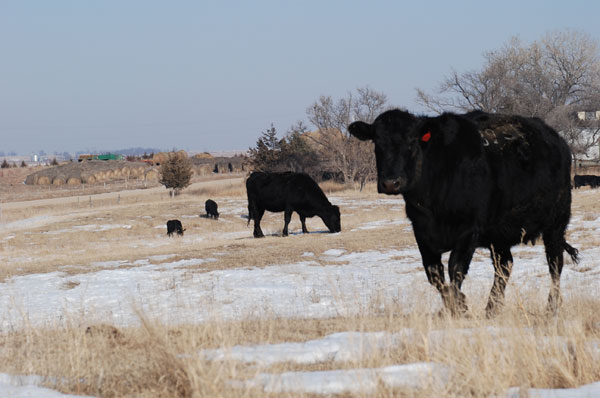Get Your Cattle Feeding Program Geared Up For A Bad Winter
If the current forecasts for an El Niño weather pattern prove true, cattle will have cold, wet conditions to contend with this winter.

There is a decent chance, says Brian Bledsoe, that an El Niño will grace the U.S. with its presence this winter. “But to be honest, we’re undecided what type of El Niño this is going to be,” he says.
Where the warm water appears in the equatorial Pacific will determine the relative strength of the El Niño, adds the climatologist, meteorologist and ag weather consultant from Southeast Colorado. Most bets at the moment are for a weak El Niño rather than a more traditional version.
But here’s the good news: for the southern tier of states, and particularly the Southern Plains, Oklahoma and eastward, Bledsoe thinks the prospects for a cooler and wetter-than-normal winter are decent.
While that’s good news for cattle producers, it could mean tougher conditions for your cows, says Ted McCollum, Texas AgriLife Extension Service beef specialist in Amarillo. “When we start thinking about cows and nutrient requirements, cold, wet weather increases their nutrient requirements and may increase the focus we’ve got to have on nutrition,” he says.
“So we may be set up this fall and winter where our cows have higher energy requirements and our forage may not be as good” because fall and winter rainfall has washed out some of the nutrients from dry, standing forage, he says. That’s important because the nutrition, or lack thereof, that your cows get this fall and winter will affect the 2016 calf crop.
Subscribe now to Cow-Calf Weekly to get the latest industry research and information in your inbox every Friday!
“We’re trying to keep condition on these cows so they rebreed next spring. We’re talking two years down the road where we have a major impact” with what you do this winter nutritionally.
That means producers would do well to focus on how much condition they put on their cows as fall moves to winter.
McCollum says the target for a good breed-up is for cows to calve in a body condition score of 5 or better next spring. “That’s going to ensure the shortest post-partum interval to have those cows ready to breed earlier,” he says.
However, nobody can pencil out exactly how much more feed you’ll need, McCollum adds. That, he says, is where the eye of the master comes into play.
But there are some numbers you can go by. “We’re talking averages, but if a cow has a good winter hair coat and she’s dry, she’s comfortable down to about a 20° wind chill,” he says. McCollum defines “comfortable” as meaning that the cow doesn’t have to burn energy to maintain her body temperature.
If the cow is wet, on the other hand, that threshold shoots up to about a 50° wind chill. “So if we have a colder, wetter winter, there may be more days where she’s wet and more days where she’s stressed and having to burn energy to maintain body heat.”
McCollum uses a “degree of coldness” measure. If the temperature threshold for a cow with a wet hair coat is a 50° wind chill, every degree below that threshold increases maintenance requirements by 1%-2%, he says. So if that cow is comfortable at 50° wind chill but it’s 35° wind chill, her maintenance requirements are 15%-30% higher than on a day when she wasn’t wet.
So, McCollum asks, what are your options? You can listen to the weatherman every night and feed more the next morning if things are going to get worse. Or you can play catch-up.
“If it’s been cold and wet, feed more because things have happened and it’s set her back a little bit,” he says. That’s where body condition comes into play—if a cow has adequate body condition, she has the reserves to stay warm when the weather gets bad. The extra groceries later will help her keep that body condition where it needs to be.
“So if we’re going to have a colder, wetter winter, it’s going to take more energy to support those cows,” McCollum says. “Think about putting a little more energy into her this fall, a little more condition, so she’ll have something to live on this winter.”
This is no time to be cutting corners, he says. “Protect that investment, but more importantly, protect the return on that investment for the next several years.”
You might also like:
Should You Over-Winter Cull Cows? One Expert Says Yes
What You Need To Know About The Beef Checkoff Drama
Meet The 2014 Stocker Award Winner -- Young Cattle Company
Pasture Values Increase By 11% in 2014
About the Author(s)
You May Also Like


.png?width=300&auto=webp&quality=80&disable=upscale)
